Understanding Mobility After Surgery
Mobility following surgery is a cornerstone of effective recovery, playing a vital role in preventing complications and accelerating healing. This article explores the measurable outcomes of physical therapy in enhancing postoperative mobility, reviewing statistical evidence, research findings, and clinical benchmarks to provide a comprehensive overview of how early mobilization and targeted interventions contribute to patient recovery trajectories and functional success.
The Fundamental Importance of Mobility After Surgery
Why is mobility important after surgery?
Moving soon after an operation is crucial for numerous reasons that directly impact recovery and patient well-being. Early mobility helps prevent serious complications like blood clots, pressure sores, lung infections, and bone loss caused by inactivity. When patients start ambulating early, it boosts circulation and oxygen flow throughout the body, which accelerates wound healing and supports overall recovery.
Physiologically, mobility stimulates activity across vital systems. It enhances gastrointestinal function, helping with quicker return of normal bowel movements. Pulmonary health is improved as patients breathe more deeply, reducing the risk of pneumonia. Urinary and genitourinary systems also benefit from movement, preserving function and preventing infections. Moreover, mobilization builds muscle strength, increases flexibility, and improves balance, which is essential for regaining independence.
Beyond physical benefits, early ambulation can positively influence psychological health by elevating mood and fostering a sense of control and self-esteem. Patients often feel more confident and motivated when they see progress in their mobility, which can shorten hospital stay durations and reduce overall healthcare costs.
Implementing structured protocols for early mobilization, along with patient education and the use of wearable technology for monitoring activity, further enhances recovery outcomes. Together, these strategies create a safer, faster pathway to functional independence after surgery.
The Role and Purpose of Physical Therapy in Postoperative Recovery
What is the importance of physical therapy after surgery?
Postoperative physical therapy is vital for achieving optimal recovery. It facilitates the restoration of mobility, flexibility, and muscle strength, enabling patients to resume their daily routines more effectively. Through targeted exercises and techniques, physical therapy helps reduce pain, swelling, and inflammation, which are common after surgical procedures.
Moreover, physical therapy plays a crucial role in managing scar tissue development. Proper interventions can prevent scar tissue from causing stiffness and discomfort, ensuring smoother movement as healing progresses.
Beyond local recovery, physical therapy encourages safe physical activity, improving circulation and reducing the risk of blood clots, infections, and cardiovascular issues. This comprehensive approach not only accelerates physical recovery but also enhances overall quality of life.
What are the purposes of physical therapy after surgery?
The primary goals of postoperative physical therapy include restoring and enhancing mobility and functional ability. This restoration allows patients to regain independence and perform everyday activities with confidence.
Pain management is another essential purpose, where therapy techniques aim to lessen pain and decrease reliance on medications. By controlling discomfort, physical therapy encourages early and sustained movement.
Prevention of scar tissue formation is also a key focus. Proper movement and therapeutic modalities help reduce the risk of adhesions and joint stiffness that could hamper recovery.
Physical therapy further aims to prevent secondary complications such as blood clots, infections, and muscle atrophy. Through guided activity and supportive interventions, it helps ensure a safer and more effective recovery process.
Finally, physical therapy supports the overall enhancement of long-term outcomes by improving muscle strength, joint flexibility, and functional capacity. These improvements contribute to better quality of life and reduced chances of readmission or further interventions.
| Purpose | Description | Impact |
|---|---|---|
| Restoring mobility | Exercises to regain movement | Faster return to activities |
| Pain control | Techniques to reduce discomfort | Less pain, less medication use |
| Scar tissue management | Preventing adhesions and stiffness | Smoother healing process |
| Functional recovery | Improving daily activity performance | Enhanced independence |
Integrating physical therapy into postoperative care is essential for a comprehensive recovery, promoting healing, and restoring function effectively.
Quantitative Gains in Mobility from Inpatient Physical Therapy
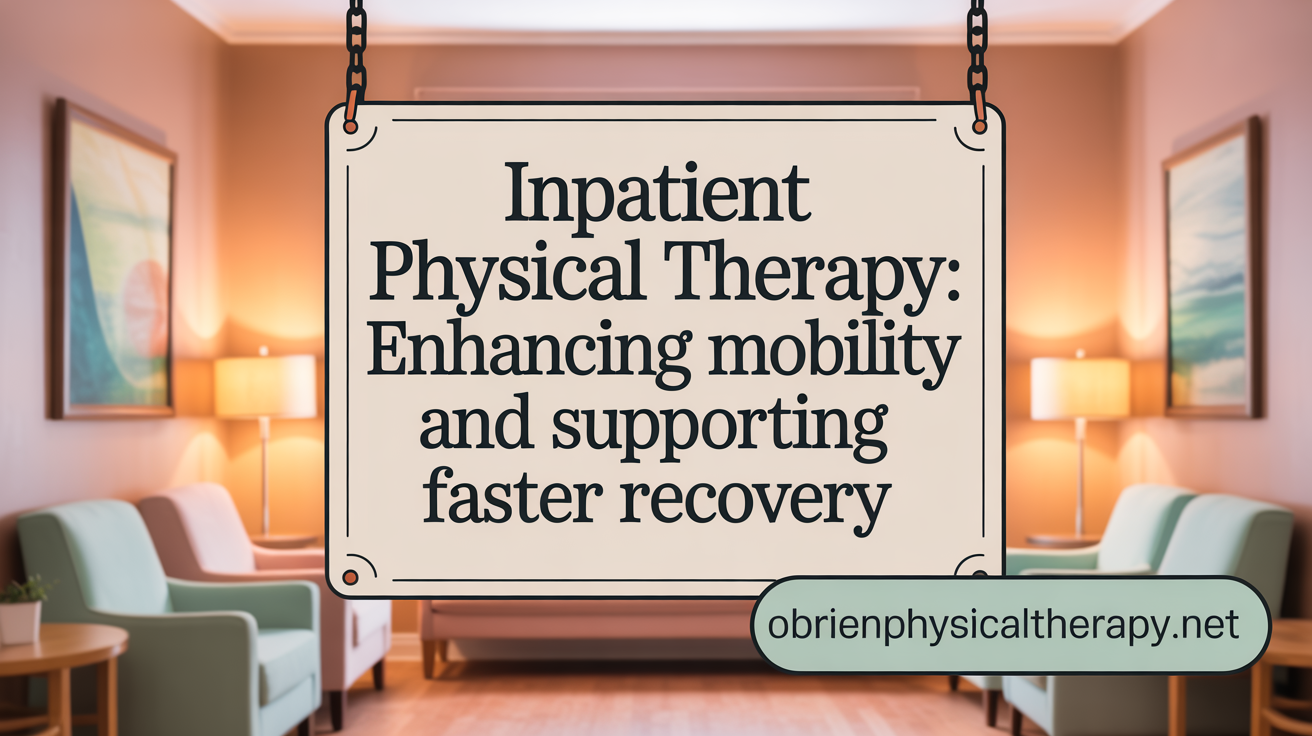
How much does inpatient physical therapy improve ambulatory distance?
Patients who received inpatient physical therapy showed a significant increase in their walking distance during hospitalization. Specifically, these patients experienced about a twofold increase in ambulatory distance compared to those who did not receive such therapy. This marked improvement highlights the effectiveness of early physical activity in restoring mobility.
Does physical therapy extend hospital stays?
While inpatient physical therapy is associated with better mobility outcomes, it also correlates with a modest increase in hospital length of stay (LOS). The additional time may be due to the structured recovery process involved in physical therapy sessions. However, this slight extension in hospitalization does not outweigh the benefits of improved functional recovery.
Are there increased risks of complications with physical therapy use?
Importantly, studies show no significant difference in peri-operative complication rates between patients who received physical therapy and those who did not. This suggests that early mobilization and structured physical therapy programs can be safe and do not increase adverse events.
How do readmission rates compare?
Although patients undergoing physical therapy had higher 30-day readmission rates, this difference was not statistically significant. This indicates that physical therapy does not necessarily lead to increased hospital readmissions, supporting its safety as part of postoperative care.
| Aspect | Findings | Additional Details |
|---|---|---|
| Ambulatory distance | Twofold increase in prescribed inpatient PT patients | Shows notable improvement in mobility outcomes |
| Hospital stay | Slightly longer stay with PT | Balances mobility gains with marginal stay extension |
| Complication rates | No significant difference | Confirms safety of inpatient physical therapy |
| 30-day readmission rate | Slight, non-significant increase | Does not compromise patient recovery or safety |
Effective planning and patient selection are essential to maximizing benefits while minimizing potential drawbacks. Inpatient physical therapy plays a crucial role in enhancing mobility without significantly increasing risks, ultimately supporting faster recovery and improved patient outcomes.
Early Mobilization Protocols and Their Measured Impact on Abdominal Surgery Outcomes
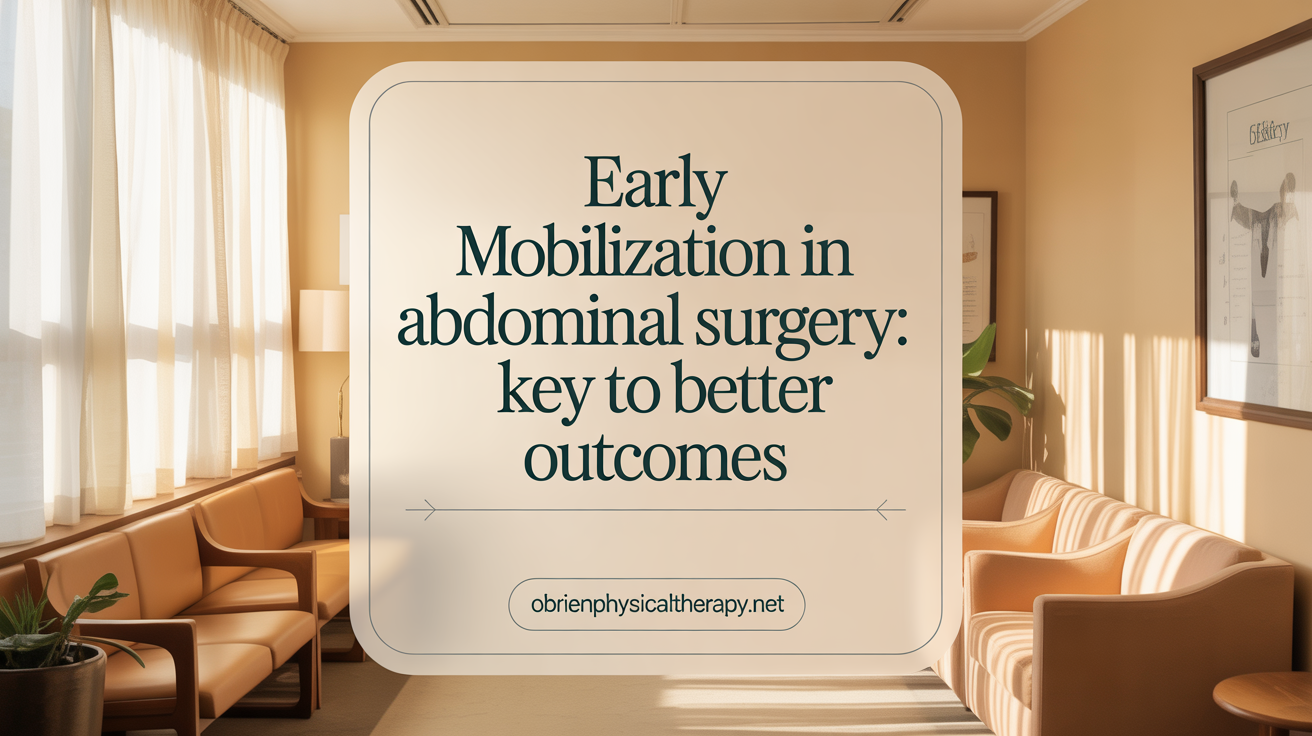
What are the benefits of early mobilization after abdominal surgery?
Early mobilization within 24 hours after abdominal surgery offers several significant benefits. It promotes better respiratory function, which is evidenced by increased oxygen saturation levels such as SpO2 and SaO2, reducing the risk of pulmonary complications like atelectasis and pneumonia.
Moreover, early movement helps accelerate gastrointestinal recovery, leading to a quicker return of bowel function. Patients who mobilize early often experience shorter hospital stays, which can reduce healthcare costs and lower the risk of postoperative complications.
In addition to physical health improvements, early mobilization enhances overall patient well-being, boosting both physical and mental recovery. It has also been linked to increased patient satisfaction, as patients often feel more engaged and in control of their recovery process.
Incorporating structured early mobility protocols aligns with modern enhanced recovery after surgery (ERAS) strategies, which aim to optimize postoperative outcomes and minimize morbidity. These protocols typically include activities such as sitting up, transferring, walking, and performing exercises within the first 24 hours post-surgery.
Research indicates that patients following such protocols experience statistically significant improvements in mobility and recovery metrics. For example, studies have shown that by day 6, a majority of patients in structured mobility groups regain independence in walking, and patient satisfaction scores significantly rise—often more than quadrupling compared to control groups.
By systematically encouraging early activity, hospitals can promote faster functional recovery, decrease length of stay, and enhance the overall quality of surgical care. Future protocols may also incorporate wearable technology and decision tools to further tailor mobilization efforts, making recovery safer and more effective.
Statistical Evidence Supporting Early Mobilization and Functional Recovery
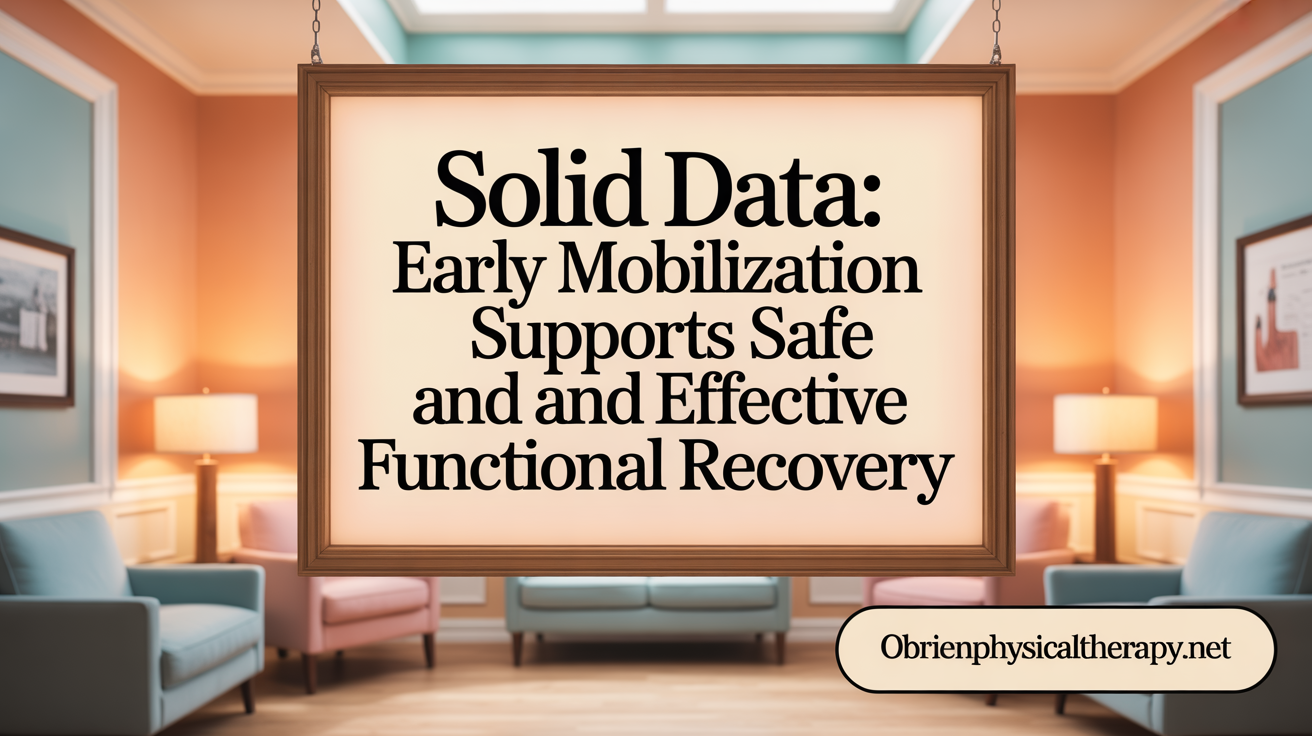
How have mobility scores improved with early mobilization?
Recent studies have demonstrated significant positive effects of early mobilization protocols on patient mobility after surgery. For example, patients participating in structured early mobility programs showed marked improvements in mobility scores, with a statistical significance of p = 0.0001. This indicates that early movement interventions can substantially enhance functional recovery.
What percentage of patients achieved independence in mobility?
Among patients undergoing abdominal surgery, about 60% (six out of ten) in the experimental group achieved independence in mobility by day 6. In contrast, in smaller controlled studies involving lung surgery patients, 80% (16 out of 20) achieved at least moderate mobility dependence by day 4, highlighting the effectiveness of early mobilization protocols.
How does early mobilization impact levels of functional dependence?
Early mobilization helps patients progress rapidly in their recovery. Data show that a significant portion of patients reach functional independence within the first week after surgery. For instance, patients in the experimental groups transitioned from non-ambulatory levels to independent activity faster than those in control groups. Additionally, improvements were observed in mobility patterns, including fewer prolonged sedentary bouts and increased short bout activities, leading to better overall physical function.
How satisfied are patients with early mobility interventions?
Patient satisfaction scores reflect the positive perception of early mobilization efforts. A notable study reported an average patient satisfaction score of 4.40 out of 5 in the experimental group, significantly higher than the 0.70 score in control groups. These high satisfaction levels underline the acceptability and perceived benefit of early movement strategies.
| Aspect | Observed Outcome | Significance | Notes |
|---|---|---|---|
| Mobility scores improvement | Significant increase (p = 0.0001) | Yes | Indicates substantial functional gains |
| Rate of independence in patients | 60% by day 6 in abdominal surgery group | High | Demonstrates quick recovery trajectory |
| Timing of achieving mobility | 80% achieved moderate independence by day 4 in lung surgery | Effective early mobilization | Faster improvement compared to traditional care |
| Patient satisfaction scores | Industry average 4.40/5 in experimental groups | Highly positive | Enhances patient-centered care |
Overall, the statistical evidence robustly supports early mobilization as a powerful approach to improving postoperative functional recovery, satisfaction, and independence.
Role of Wearable Technology in Measuring Postoperative Mobility Metrics
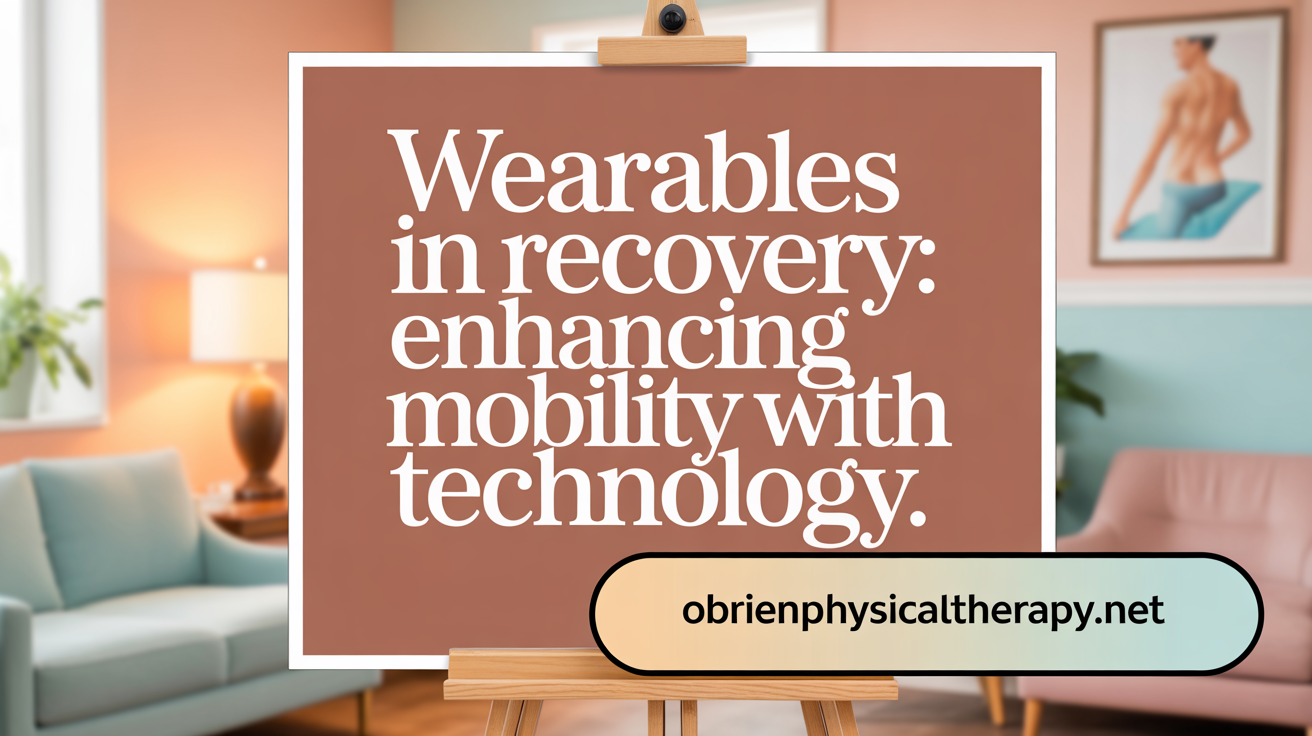
How are step counts used to assess postoperative mobility?
Wearable devices like accelerometers have become a valuable tool in tracking patients' movement after surgery. Specifically, step counts serve as an objective measure of mobility during the recovery period. Studies utilizing devices such as the ActiGraph GT3X have shown that while the total number of daily steps may not change significantly in the initial days after surgery, other indicators of physical activity can still improve.
What about physical activity duration and intensity?
In addition to steps, wearable tech measures how long patients engage in light or moderate activities. Over time, patients tend to increase the duration and intensity of their movements, which reflects recovery progress. For instance, light-intensity activities often see a statistically significant increase over postoperative days, contributing to overall functional recovery.
How is sedentary time evaluated and what does it reveal?
Wearing accelerometers also provides insight into sedentary patterns, such as periods of prolonged inactivity lasting 60 minutes or more. Research shows that these long sedentary bouts decrease over the early postoperative days, with a corresponding increase in shorter sedentary intervals. These shifts suggest that patients are gradually becoming more active, which correlates with improved outcomes and shorter hospital stays.
What is the acceptability of wearable technology among patients?
Patients generally find wearable devices like accelerometers easy and comfortable to wear. In recent studies, the acceptability score was median 10 out of 10, indicating high patient compliance. This positive feedback supports the practical application of wearable tech in daily clinical routines.
Implementation and future potential
Incorporating wearable technology into postoperative care allows healthcare providers to objectively monitor mobility trends and tailor recovery plans accordingly. Future advancements aim to integrate these data into electronic health records and employ machine learning algorithms to optimize personalized recovery pathways. Overall, wearable devices present a promising approach to enhancing early postoperative mobility assessment and improving patient outcomes.
| Feature | Measurement Type | Benefits | Challenges |
|---|---|---|---|
| Step Counts | Number of steps taken daily | Indicator of activity level, linked to shorter hospital stay | Variability based on patient motivation |
| Physical Activity Duration | Time spent in light/moderate activity | Reflects progress in recovery | Accurate tracking depends on device placement |
| Sedentary Patterns | Duration and frequency of sedentary bouts | Helps identify periods of inactivity, target for intervention | Maintaining consistent wearables is essential |
| Patient Acceptability | Ease of use, comfort | High patient compliance | Continuous engagement needed |
This integration of wearable technology into postoperative care offers a practical and patient-friendly method for tracking recovery, fostering tailored interventions, and ultimately improving clinical outcomes.
The Association Between Physical Activity and Length of Hospital Stay
How does the number of steps taken post-surgery relate to hospital length of stay?
Recent studies indicate that increased physical activity, measured by step count, is associated with shorter hospital stays. Patients who walk more during their early postoperative days tend to recover faster and are discharged sooner. For instance, a negative correlation was found between the total number of steps on the fourth postoperative day and the length of stay, with higher step counts linked to shorter hospitalizations.
How do activity levels influence recovery speed?
Early mobilization is crucial for speeding up recovery after surgery. Patients who are more active in the days immediately following their procedures experience fewer complications, less pain, and enhanced functional capacity. Moreover, increased light physical activity over the initial postoperative days correlates with quicker gastrointestinal recovery and improved overall outcomes.
What is the role of 'uptime' and sedentary patterns in predicting hospital stay?
'Uptime,' or the duration patients spend sitting upright, has been identified as a predictor of hospital length of stay. One study showed that each additional minute of uptime predicted a reduction in hospitalization duration. Additionally, patterns of sedentary behavior matter: decreasing prolonged sedentary bouts and increasing short, frequent activity periods are linked to faster recovery. Overall, promoting early and frequent movement can significantly reduce the time patients spend in the hospital.
Effects of Early Mobilization on Postoperative Complications and Hospital Costs
How does early mobilization reduce postoperative complications?
Early mobilization is recognized as a vital part of Enhanced Recovery After Surgery (ERAS) pathways. It has been linked to a lower incidence of various postoperative issues such as pulmonary infections, deep vein thrombosis, urinary tract infections, pressure sores, and wound infections. By encouraging patients to move and walk soon after surgery, medical teams can minimize the risks associated with immobility.
Studies show that patients who engage in early physical activity experience less pain, improved muscle strength, and better functional recovery. Moreover, early mobilization helps prevent serious complications like delirium, which is common in postoperative patients, particularly the elderly.
What is the impact on delirium and infection rates?
Research indicates a reduction in postoperative delirium among patients who mobilize early. This neuropsychiatric condition can prolong hospitalization and increase healthcare costs. Furthermore, early activity decreases the risk of pulmonary complications and infections by promoting better lung function and circulation.
Patients who are mobilized within 24 hours show fewer incidences of pneumonia and other respiratory infections. This proactive approach also shortens the duration of hospital stays and enhances overall recovery.
What are the economic benefits of early mobilization?
Implementing early mobilization protocols can lead to significant cost savings for healthcare systems. Shorter hospital stays directly reduce hospitalization expenses. Additionally, fewer complications mean less need for additional treatments or interventions.
By minimizing adverse events, early mobilization contributes to reduced readmission rates, further lowering overall healthcare costs. As a result, hospitals can deliver more efficient and cost-effective care.
| Aspect | Effect | Additional Notes |
|---|---|---|
| Reduction in complications | Decreases pulmonary infections, DVT, pressure sores, wound infections | Early activity improves circulation, respiratory function |
| Incidence of delirium | Lower in early mobilization groups | Especially relevant in elderly patients |
| Hospital costs | Reduced due to shorter stays and fewer treatments | Promotes cost-efficient recovery protocols |
In sum, early mobilization not only enhances patient outcomes but also offers substantial economic advantages, making it a crucial component of modern postoperative care.
Postoperative Exercise: Enhancing Recovery and Quality of Life
What is the impact of postoperative exercise on recovery?
Engaging in physical activity after surgery has a profound effect on a patient's overall recovery. Regular postoperative exercise improves physical function, helping patients regain mobility and strength more quickly. It encourages faster gastrointestinal recovery, reduces hospital stay duration, and enhances functional walking capacity.
Research shows that early mobilization can lower postoperative complication rates, such as pulmonary infections and blood clots, and diminish pain levels. These benefits contribute to a smoother and more effective rehabilitation process.
Moreover, postoperative exercise supports mental and social health by increasing confidence and independence in daily activities. Patients often report higher satisfaction scores and better quality of life when actively involved in their recovery.
In long-term terms, exercise can help reduce persistent postoperative pain, especially after joint replacement surgeries. It also encourages social interaction during rehabilitation, which can positively influence mood and motivation.
It's important to tailor postoperative exercise programs to individual needs, considering factors like surgical procedure, physical capacity, and risk factors. Early initiation of activity, following guidelines that recommend mobilizing patients within 24 hours, maximizes benefits and facilitates faster return to normal life.
How does postoperative physical activity improve functional fitness?
Physical activity after surgery restores muscle strength, flexibility, and endurance. Structured rehabilitation protocols, including exercises like walking, transfers, and other functional movements, directly improve mobility scores.
Using objective measurements, such as wearable accelerometers, shows that patients who increase their activity levels tend to have shorter hospital stays and better functional recovery. For example, patients who walked more on early recovery days experienced fewer complications and faster overall progress.
Additionally, interventions such as neuromuscular electrical stimulation and progressive muscle relaxation support muscle strength, joint mobility, and reduce anxiety, all of which contribute to functional improvements.
How does early mobilization help reduce hospital stay?
Early mobilization—initiating movement within 24 hours after surgery—has become a cornerstone of enhanced recovery pathways. Patients who begin moving early typically experience shorter hospital stays and fewer postoperative complications.
Studies report that increased levels of physical activity correlate with a decrease in length of stay. For instance, patients who took more steps or spent less time sedentary on postoperative days were discharged sooner.
By preventing issues like blood clots, muscle atrophy, and joint stiffness, early mobilization accelerates recovery and reduces need for prolonged inpatient care.
Implementing multidisciplinary approaches, including education and wearable technology, ensures patients remain motivated and compliant with mobility protocols.
How does postoperative exercise influence mental and social health?
Exercise isn't just beneficial physically; it also plays a vital role in mental well-being. Patients engaged in active recovery often report higher satisfaction and better mood states.
Promoting movement helps reduce anxiety and feelings of helplessness that can accompany surgery. It encourages social interaction with healthcare providers and peers, fostering a supportive environment.
Furthermore, improvements in mobility and independence enable patients to participate more fully in social activities, enhancing quality of life and easing psychological stress.
In conclusion, integrating early mobilization and tailored exercise routines into postoperative care significantly improves recovery outcomes. It shortens hospital stays, reduces complications, alleviates pain, and boosts mental health, helping patients return swiftly and safely to their normal routines.
| Aspect | Impact | Supporting Details |
|---|---|---|
| Pain reduction | Decreases postoperative pain | Early mobilization reduces pain scores and enhances pain management |
| Functional fitness | Restores muscle strength and mobility | Objective tools show higher activity levels linked to better recovery |
| Hospital stay | Shorter stays | Higher physical activity correlates with reduced hospital duration |
| Mental and social health | Improves mood and confidence | Higher satisfaction scores and social engagement during rehab |
For optimal recovery, healthcare teams should assess individual risks and tailor exercise programs accordingly, employing innovations like wearable tech and patient education to maximize benefits.
Customized Physical Therapy Interventions for Different Surgical Procedures
How do physical therapy strategies vary for knee, hip, shoulder, fractures, and spine surgeries?
Physical therapy plays a vital role in post-operative recovery, but approaches are tailored to the specific needs of each surgical procedure. For knee and hip arthroplasty, therapy focuses on restoring joint mobility, strength, and function, often involving early weight bearing and progressive exercises to regain walking ability.
In shoulder surgeries, such as rotator cuff repairs or shoulder arthroplasty, physical therapy emphasizes shoulder mobility, stability, and muscle strengthening. Techniques include passive and active range of motion exercises, neuromuscular re-education, and gradual strengthening activities.
Fractures and spine surgeries require customized protocols based on fracture type and surgical intervention. Post-fracture therapy aims to prevent stiffness, promote healing, and restore movement using gentle motion and weight-bearing activities as appropriate.
What specific methods are used in these targeted therapies?
Different interventions are applied depending on the procedure. For joint replacements, therapies combine manual therapy, therapeutic exercises, and modalities like electrical stimulation. In fracture or spine cases, gentle mobilization, positioning, and neuromuscular electrical stimulation can facilitate recovery.
Customized plans often include home exercise programs, functional training, and education to ensure proper recovery outside clinical settings. The goal is to improve pain management, mobility, muscle strength, and ultimately, the patient’s quality of life.
How does physical therapy impact recovery success?
Effective, tailored physical therapy can significantly improve outcomes by reducing pain, minimizing complications like stiffness or muscle atrophy, and shortening hospital stays. It fosters early mobilization, which has been linked to better functional recovery and patient satisfaction. Multidisciplinary collaboration ensures each patient's therapy plan aligns with their specific surgical procedure and personal needs.
| Surgical Procedure | Common Therapy Focus | Techniques Used | Expected Benefits |
|---|---|---|---|
| Knee Arthroplasty | Restoring joint mobility and strength | Therapeutic exercises, electrical stimulation, manual therapy | Faster recovery, improved walking, reduced pain |
| Hip Arthroplasty | Enhancing hip function and stability | Range of motion exercises, weight-bearing activities, modalities | Increased mobility, reduced stiffness, quicker return to activities |
| Shoulder Surgery | Regaining shoulder mobility and stability | Passive and active range of motion, neuromuscular training | Better function, reduced disability |
| Fractures and Spine Surgery | Promoting healing and preventing stiffness | Gentle mobilization, positioning, electric stimulation | Faster rehabilitation, minimized complications |
By tailoring physical therapy to the type of surgery, healthcare teams can optimize recovery, improve functional outcomes, and enhance patient satisfaction.
Early Mobilization Techniques in Orthopedic Surgery and Their Outcomes
What are the common early mobilization techniques used after orthopedic surgery?
Early mobilization after orthopedic procedures involves a combination of various therapeutic strategies aimed at enhancing recovery. These techniques include motion exercises, progressive muscle relaxation (PMR), weight bearing, and neuromuscular electrical stimulation (NMES).
Motion exercises are designed to restore joint movement and improve range of motion. They often start shortly after surgery and include activities like gentle flexion and extension movements. Studies have shown that such exercises facilitate faster recovery of joint mobility, with notable improvements within six weeks.
Progressive Muscle Relaxation (PMR) is combined with physiotherapy to help reduce patient anxiety, manage neuromuscular activity, and improve overall outcomes. When paired with early mobility efforts, PMR has demonstrated benefits in reducing stress and enhancing muscle strength.
Weight bearing is another crucial component, usually initiated around two weeks post-surgery, depending on the specific case. Early weight bearing can reduce stiffness, decrease pain, and improve overall functional capacity. It plays a significant role in preventing muscle atrophy and joint stiffness.
Neuromuscular Electrical Stimulation (NMES) involves applying electrical currents to stimulate muscle contractions, particularly in the quadriceps. This technique helps increase muscle strength and can potentially shorten hospital stays. NMES has shown promise in post-total knee arthroplasty patients, supporting quicker functional recovery.
What are the outcomes associated with early mobilization?
Implementing these early mobilization techniques has been linked to numerous positive effects. Patients often experience faster recovery of joint and limb function, reduced stiffness, and less muscle atrophy.
Research indicates a significant reduction in hospital stay lengths and postoperative complications such as joint stiffness, muscle wasting, and metabolic disturbances.
Furthermore, early mobilization has been associated with higher patient satisfaction scores and better overall quality of life. It also helps decrease the incidence of complications like deep vein thrombosis, pulmonary infections, and pressure ulcers.
A collaborative approach among healthcare providers—comprising nurses, physiotherapists, and doctors—is essential to optimize these methods for each patient’s needs. As research advances, incorporating innovative tools like wearable devices and machine learning will further refine early mobilization strategies, thereby improving outcomes in orthopedic recovery.
Safety and Risk Assessment of Postoperative Physical Therapy
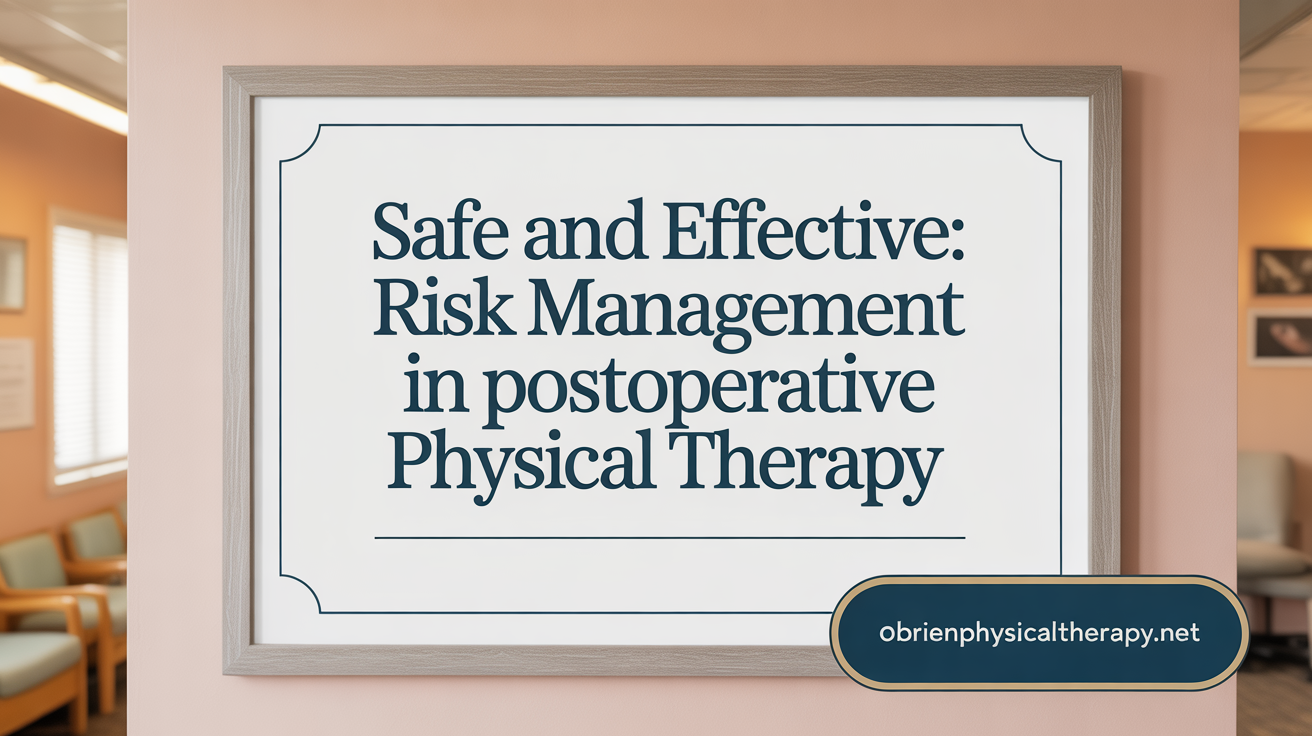
What are the perioperative complication rates associated with physical therapy?
Research indicates that the routine use of inpatient physical therapy (PT) does not significantly increase perioperative complication rates when compared to standard nurse-assisted ambulation. This suggests that early mobilization and physical therapy are generally safe components of postoperative care, with no added risk of complications like infections or wound issues much higher than conventional care.
How important is screening and risk stratification before initiating PT?
To maximize benefits and minimize risks, it is recommended that healthcare providers perform thorough screening and risk assessment before starting inpatient PT. Proper risk stratification helps identify patients who are most likely to benefit from early mobilization and those who might need tailored interventions to avoid potential adverse events, such as implant failure or excessive strain on healing tissues.
Are there risks of implant failure or fracture displacement during early mobilization?
Current evidence supports that early mobilization, when carefully planned and appropriately tailored, is safe and does not increase the likelihood of implant failure or fracture displacement. Multiple studies have shown that early activity does not compromise surgical stability, and no significant incidents of fractures or implant displacements have been reported directly linked to mobilization protocols.
In summary, with proper patient selection, effective screening, and risk management strategies, early post-operative physical therapy can be safely integrated into recovery protocols. This approach promotes faster functional recovery without increasing the likelihood of complications or damage to the surgical site.
Integration of Multidisciplinary Teams to Optimize Mobility Outcomes

How does collaboration among nurses, physiotherapists, and doctors improve postoperative mobility?
Effective recovery after surgery depends heavily on a coordinated approach among healthcare professionals. Nurses, physiotherapists, and doctors each play vital roles in early mobilization efforts. Nurses monitor patient vitals and provide initial support, while physiotherapists develop individualized mobilization plans, including exercises and movement protocols. Doctors oversee the overall surgical and recovery process, ensuring safe implementation of these activities. Working together allows for timely interventions, reduces barriers like pain or insecurity, and fosters an environment where mobility can be safely advanced.
What is the role of education and decision-making tools in enhancing mobilization?
Patient education is crucial for motivating engagement in mobilization protocols. Clear communication about the benefits and safety measures helps reduce patient anxiety and demotivation. Clinical decision-making tools, such as risk stratification algorithms, assist healthcare teams in identifying which patients are best suited for early mobilization. These tools provide evidence-based guidelines that facilitate the tailoring of intervention plans, ensuring resources are allocated efficiently and patients receive appropriate support for optimal recovery.
How can wearable technology be integrated to improve postoperative mobility?
Wearable devices like accelerometers and step counters offer objective measures of patient activity levels. These tools help track progress, identify gaps in mobilization, and provide real-time feedback to both clinicians and patients. Incorporating wearable data into electronic medical records enables personalized adjustments to rehabilitation protocols. Emerging approaches utilize machine learning algorithms to analyze activity patterns and predict recovery trajectories, further refining care strategies. Overall, technology integration promotes safety, enhances compliance, and accelerates recovery by providing precise, data-driven insights into postoperative mobility.
| Aspect | Benefits | Additional Details |
|---|---|---|
| Multidisciplinary Collaboration | Enhanced safety, tailored plans, faster recovery | Nurses, physiotherapists, and doctors work together to coordinate care effectively |
| Education & Decision Tools | Improved patient engagement, optimized resource use | Risk assessment and guideline-based protocols ensure appropriate mobilization |
| Wearable Technology | Accurate activity tracking, personalized care | Data integration in EMRs, machine learning for outcome prediction |
This collaborative, technology-driven approach is vital for maximizing functional outcomes, reducing hospital stays, and ensuring safe, efficient recovery after surgery.
Barriers to Effective Early Mobilization and Strategies to Overcome Them
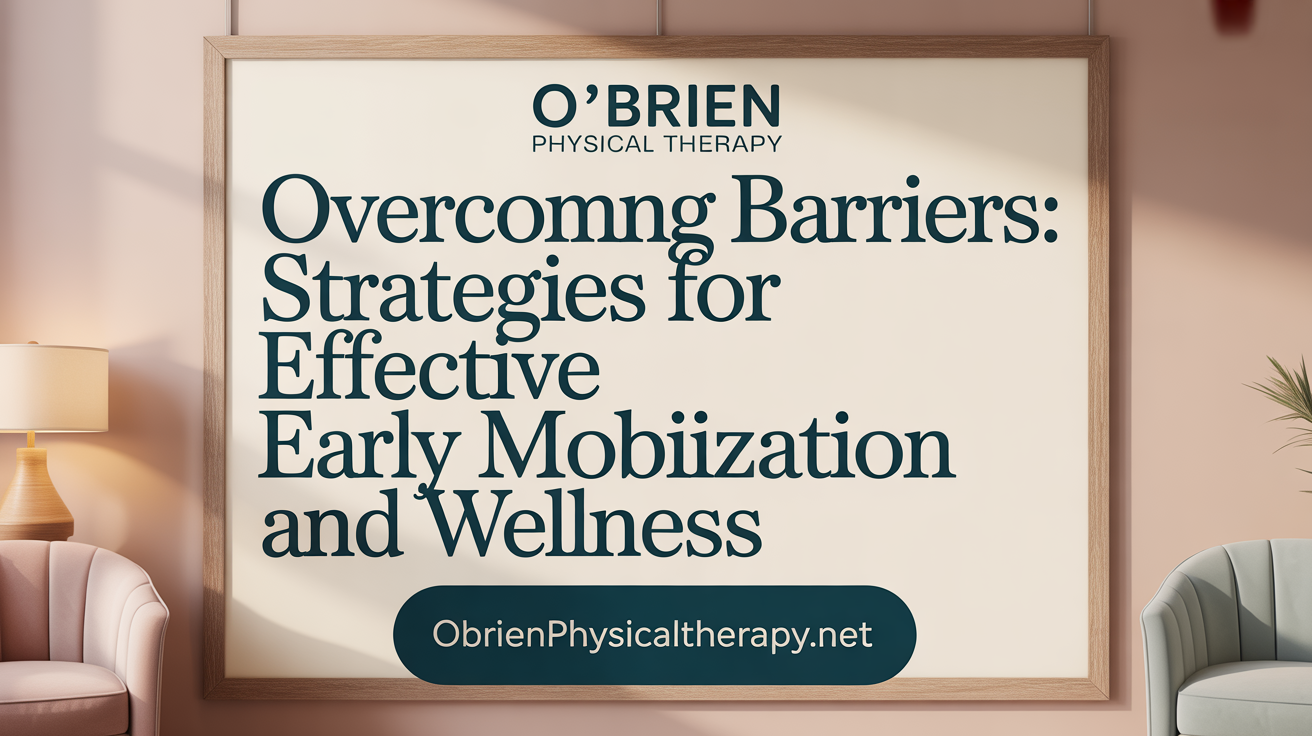
What are patient-related barriers?
Patients often face challenges such as pain, insecurity, and demotivation that hinder early mobilization after surgery. Fear of pain or injury can make patients reluctant to participate in mobility activities. Additionally, some may feel anxious about movement, worrying it could harm their recovery.
To address these issues, education plays a vital role. Clear communication about the safety and benefits of early mobilization can boost confidence. Pain management strategies, including appropriate medication and comfort measures, can also encourage patients to engage actively in their recovery.
How do resource limitations affect early mobilization?
Limited staffing, inadequate equipment, and lack of dedicated space can restrict the ability to implement early mobilization protocols effectively. Hospitals with insufficient resources may find it difficult to provide timely physical therapy sessions or to monitor mobilization efforts properly.
Solutions include integrating technology, such as wearable devices, to assist in tracking activity levels. Training healthcare staff to prioritize mobilization and establishing clear protocols can streamline efforts despite resource constraints.
What cultural beliefs impact early mobilization?
Cultural perceptions about rest and recovery often influence patient behavior. Some cultures view prolonged rest as essential after surgery, which can delay mobilization efforts. Nocebo beliefs—expectations of negative outcomes from movement—may also deter patients.
Overcoming this barrier involves patient education tailored to cultural contexts, emphasizing the safety and importance of early activity. Engaging family members and community leaders in this education process can enhance acceptance.
What role do intervention tools play?
Proper intervention tools can significantly improve mobilization compliance. Education programs, clinical decision-making tools, and wearable technology like step counters help motivate patients and track progress. These tools provide tangible data that reinforce the benefits of activity.
Future strategies include integrating wearable device data into electronic health records and employing machine learning algorithms to personalize mobilization targets. Such innovations can optimize recovery and make early mobilization both effective and safe.
| Barrier Type | Challenges | Strategies | Additional Information |
|---|---|---|---|
| Patient-related | Pain, insecurity, demotivation | Education, pain management, psychological support | Understanding patient fears and concerns |
| Resource limitations | Staff shortages, equipment scarcity | Training, technology use, protocol development | Efficient resource allocation |
| Cultural beliefs | Rest preference, negative expectations | Culturally sensitive education, family involvement | Respecting cultural norms and values |
| Intervention tools | Lack of motivation, poor tracking of activity | Wearables, decision-support tools, integrated data systems | Use of innovative technology |
Future Directions: Technology and Data-Driven Postoperative Mobility Enhancement
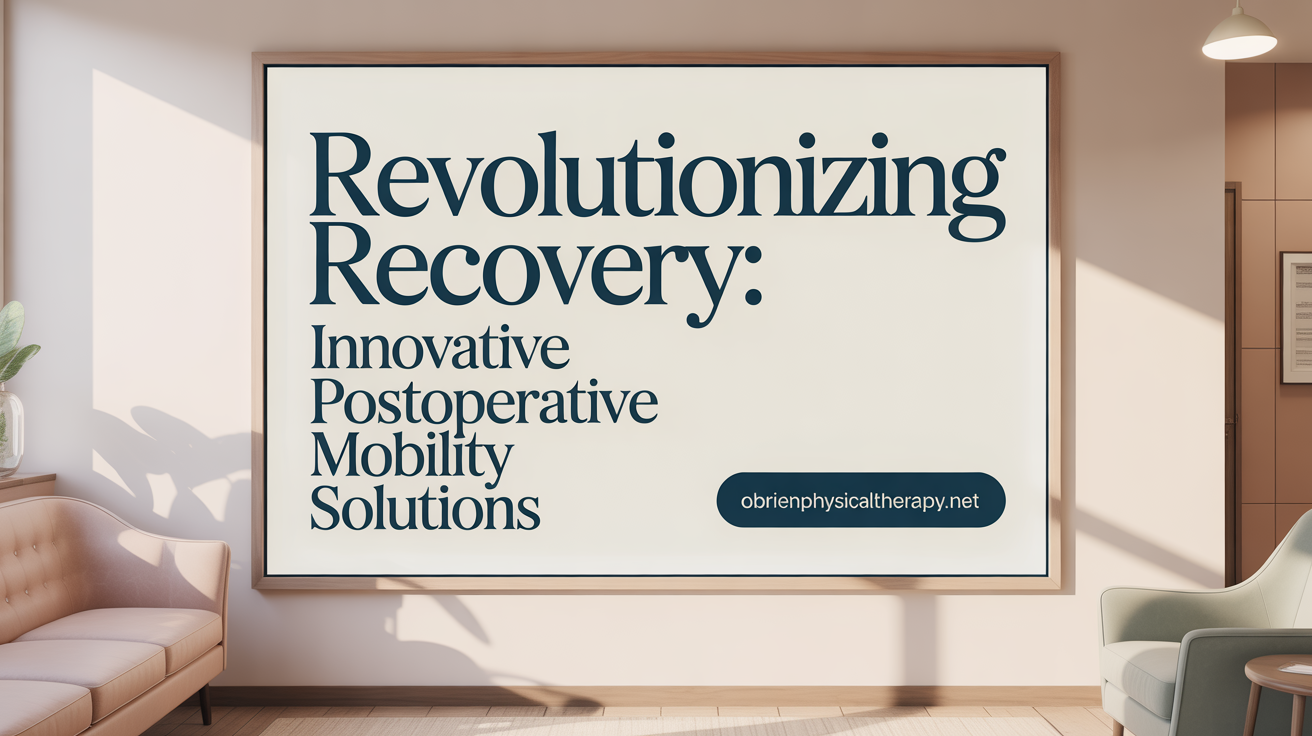 As the field of postoperative physical therapy advances, integrating innovative technologies promises to improve patient outcomes and recovery efficiency. One promising area is the use of machine learning algorithms to analyze patient data, predict optimal mobilization timelines, and personalize rehabilitation plans.
As the field of postoperative physical therapy advances, integrating innovative technologies promises to improve patient outcomes and recovery efficiency. One promising area is the use of machine learning algorithms to analyze patient data, predict optimal mobilization timelines, and personalize rehabilitation plans.
These algorithms can process a wide range of information, including patient health history, surgical details, and real-time activity metrics, to recommend specific interventions. For example, machine learning models can identify which patients are most likely to benefit from early mobilization and tailor their therapy schedules accordingly.
Another significant development involves the integration of wearable devices, such as accelerometers and step counters, into electronic medical records (EMRs). Continuous monitoring of physical activity enables clinicians to track adherence to mobilization protocols and assess progress objectively.
This integration facilitates dynamic adjustments to therapy plans based on real-time data, improving flexibility and responsiveness in care. Moreover, having comprehensive mobility data stored in EMRs supports better communication among multidisciplinary teams, ensuring synchronized and personalized patient care.
Customized mobilization protocols, guided by machine learning insights and detailed activity data, aim to optimize recovery. These tailored approaches consider individual patient factors, surgical procedures, and recovery responses, promoting safer and more effective mobilization strategies.
In summary, leveraging artificial intelligence, wearable technology, and EMR integration can revolutionize postoperative physical therapy. Future strategies focus on data-driven, individualized care plans that accelerate recovery, reduce hospital stays, and enhance overall patient satisfaction.
Current research continues to explore these innovations, with the goal of transforming postoperative mobility management into a precise, efficient, and patient-centered practice.
Evaluating Recovery Trajectories Through Numerical Benchmarks and Metrics
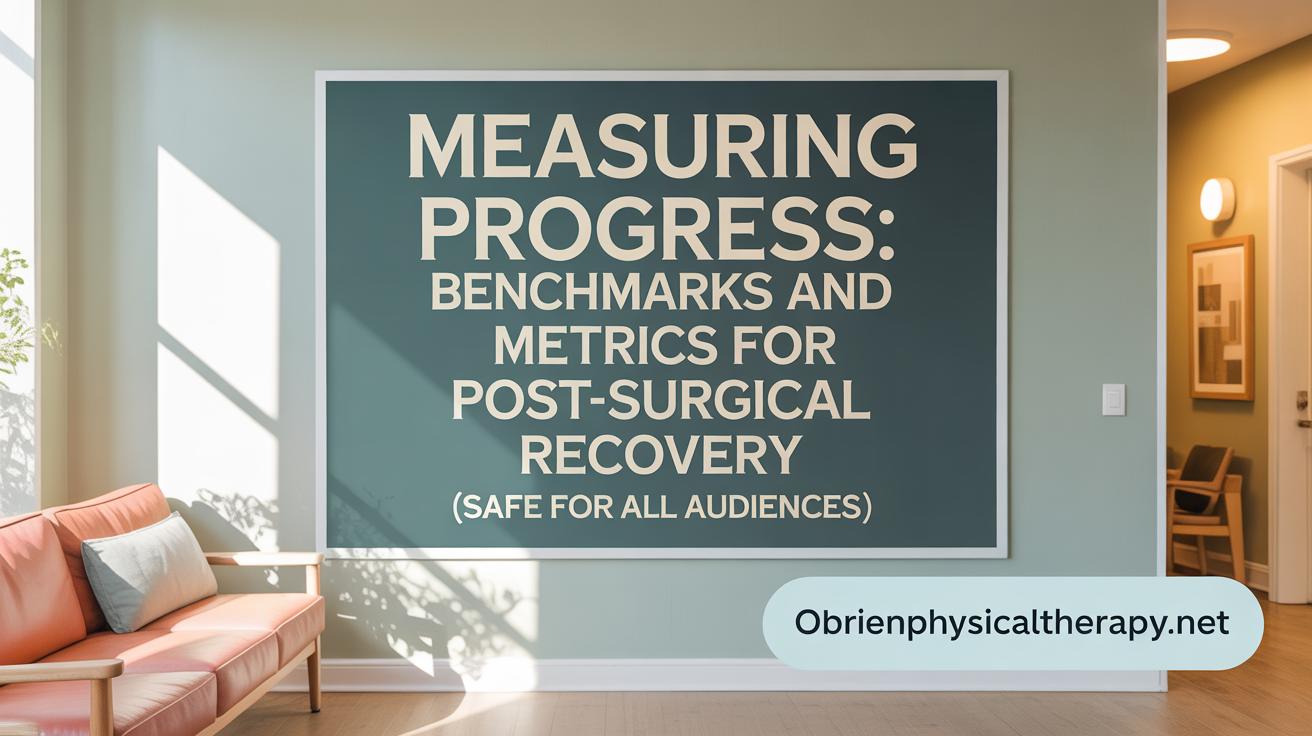
What Are Success Rates in Postoperative Physical Therapy?
Postoperative physical therapy (PT) success is often gauged by how quickly patients regain mobility, reduce pain, and resume daily activities. Studies show that structured early mobilization protocols can lead to significant improvements in mobility scores, with notable enhancements seen within the first week after surgery. For example, in some intensive mobility programs, 60% of patients achieved independence in mobility by day 6. Success also includes patient satisfaction, with experimental groups reporting satisfaction scores averaging 4.40 out of 5, indicating strong patient approval.
What Are Functional Mobility Milestones?
Functional milestones serve as benchmarks indicating recovery progression. These include achieving independent walking, which in recent studies was reached by 60% of patients by day 6. Early mobilization protocols stipulate targets such as cumulative walking distance, with some guidelines recommending walking a certain number of steps daily. In targeted studies, 80% of patients reached at least "moderately dependent" mobility status by day 4. These milestones help clinicians tailor rehabilitation efforts and monitor recovery objectively.
Which Activity Level Thresholds Are Used in Recovery?
Activity levels are measured through technological tools like accelerometers, which track step counts, duration of physical activity, and sedentary patterns. For patients after lung or abdominal surgeries, typical measures include daily step counts and time spent upright. Data indicates that increasing light activity correlates with faster recovery, with some studies noting rising light-intensity activity and reduced sedentary bouts over time.
In one study, patients showed no significant increase in steps during the first four days but increased light activity and decreased prolonged sitting. Meeting activity thresholds, such as taking more steps or spending more time upright each day, generally links to shorter hospital stays and fewer complications. Wearable technology thus becomes an invaluable tool for setting personalized activity goals and evaluating progress.
Quantitative Summary of Postoperative Recovery Metrics
| Metric | Typical Value | Benchmark or Goal | Description |
|---|---|---|---|
| Independence in mobility | 60% by day 6 | Achieve independence within 7 days | Based on patient-reported and observed outcomes |
| Satisfaction score | 4.40/5 | Strive for >4 | Reflects patient perception of recovery |
| Daily steps | No increase in first 4 days | ≥ 2000 steps/day over one week | Associated with faster recovery |
| Light activity increase | Significant over days 1-5 | 20% increase from baseline | Facilitates functional improvement |
| Prolonged sedentary bouts | Decrease | < 10 min | Encourages upright and walking activities |
These benchmarks provide clear markers to evaluate and optimize postoperative recovery. Early mobilization, when guided by these standards, offers a pathway to safer, faster, and more effective rehabilitation.
Impact of Preoperative Physical Therapy and Rehabilitation on Postoperative Results

What are the benefits of preoperative physical therapy (prehab)?
Prehab aims to prepare patients physically before surgery, focusing on increasing strength, flexibility, and pain management. This preparation helps patients recover faster post-surgery by establishing a baseline level of fitness and reducing the risk of complications.
How does prehab contribute to risk reduction?
Preoperative physical therapy can improve overall physical condition, which decreases the likelihood of postoperative issues like joint stiffness, muscle atrophy, and metabolic disturbances. It also educates patients on post-surgical exercises, which promotes better adherence to mobilization protocols.
In what ways does prehab enhance baseline fitness?
By engaging in targeted exercises before surgery, patients can build strength and flexibility. This improved baseline makes it easier to restore mobility and function after the procedure.
Can preoperative physical therapy shorten hospital stays?
Studies suggest that prehab can lead to shorter hospital stays by reducing recovery time and decreasing the risk of postoperative complications. Patients who are physically better prepared tend to mobilize earlier, which is linked with reduced length of stay.
| Aspect | Effect | Additional Details |
|---|---|---|
| Prehab Benefits | Improved recovery, faster regain of function | Combines strength, flexibility, and pain management strategies |
| Risk Reduction | Lower complication rates | Reduces joint stiffness, muscle atrophy, and other issues |
| Baseline Fitness | Enhanced physical preparedness | Helps patients handle postoperative challenges better |
| Hospital Stay Shortening | Reduced length of stay | Facilitates quicker mobilization and discharge |
Overall, integrating preoperative physical therapy into surgical planning can significantly improve outcomes, making recovery smoother and quicker for patients.
Patient Satisfaction and Perception of Physical Therapy and Mobility Gains
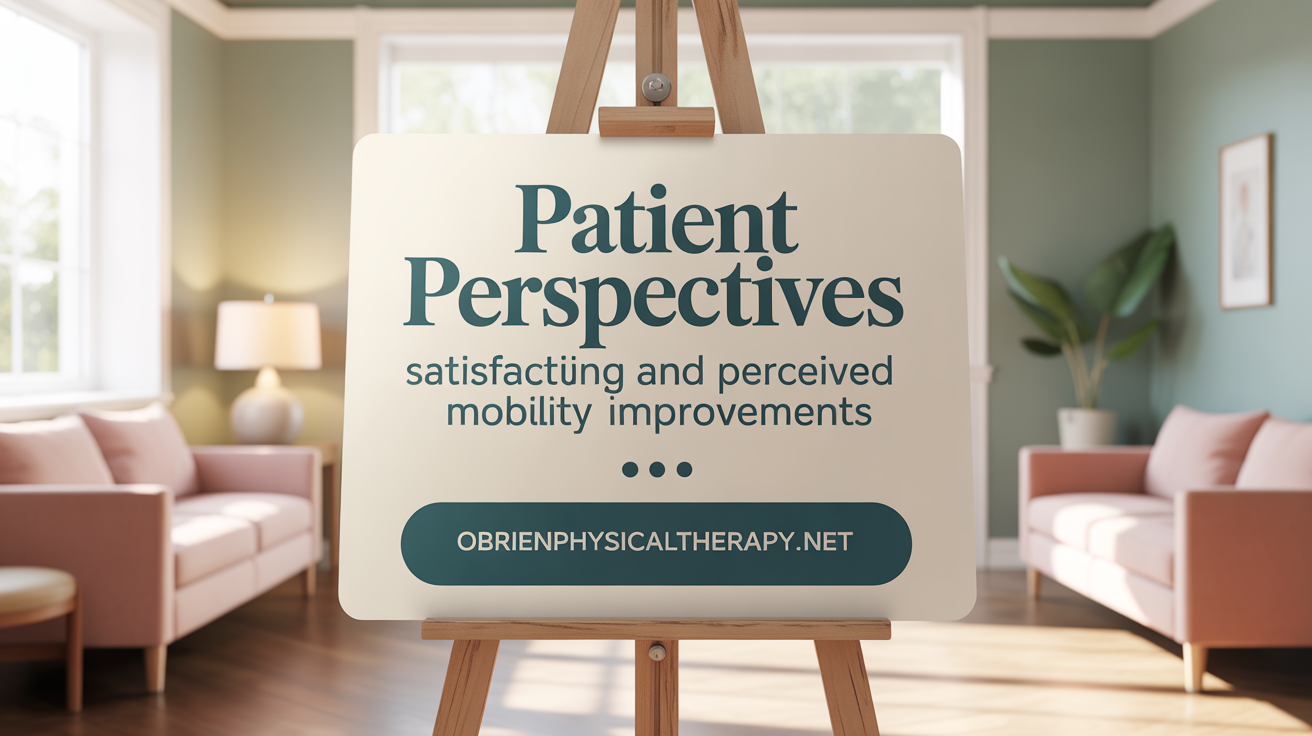
How do patients perceive their post-operative physical therapy and mobility improvements?
Patients who participate in structured early mobility programs often report higher satisfaction levels compared to those who do not. For instance, some studies demonstrate that patients in experimental groups, who received targeted physical therapy interventions, scored an average of 4.40 on patient satisfaction scales, significantly above the 0.70 score reported by control groups. This marked difference highlights the positive perception patients have regarding their rehabilitation experience.
To what extent does physical therapy influence patient confidence in mobility?
Engagement in physical therapy helps boost patients' confidence in their mobility abilities. Patients who actively participate in early mobilization tend to achieve independence in walking by the sixth post-operative day, with many achieving 'moderately dependent' mobility levels by day 4. These rapid improvements contribute to a sense of control and optimism about recovery, encouraging continued participation in rehabilitation activities.
What are the psychological benefits of mobility gains?
Improved mobility and active participation in therapy can also provide significant psychological benefits. Patients often report feeling more motivated and less anxious about their recovery process. Increased mobility and comfort from therapy are linked to higher overall well-being, reduced feelings of helplessness, and greater satisfaction with care. Enhanced patient-reported outcomes include better mood, reduced postoperative distress, and a stronger belief in a successful recovery.
| Aspect | Typical Outcomes | Additional Notes |
|---|---|---|
| Satisfaction Scores | Average score 4.40 in experimental groups | Significantly higher than control groups |
| Mobility Confidence | Achieving independence by day 6 or earlier | Fosters positive recovery outlook |
| Psychological Benefits | Higher motivation, reduced anxiety, better mood | Improves overall rehabilitation experience |
These positive perceptions affirm that integrating patient-centered approaches and ensuring early, effective mobility can greatly enhance the overall inpatient recovery experience.
Comparative Analysis: Physical Therapy Versus Nurse-Assisted Ambulation Outcomes
How does the length of hospital stay compare between patients receiving physical therapy and nurse-assisted ambulation?
While routine use of post-operative physical therapy (PT) is associated with slight increases in hospital length of stay, the difference remains modest. Patients undergoing inpatient PT often stay a bit longer than those relying solely on nurse-assisted ambulation. This additional time may be due to the structured nature of PT, which aims to optimize recovery but can extend the hospital stay slightly.
What impact does inpatient physical therapy have on patients' mobility during their hospital stay?
Patients who receive inpatient PT show marked improvements in mobility compared to those who do not. Specifically, studies have shown that inpatient PT can double the distance a patient ambulates during their stay. For example, in some cases, patients in PT programs are able to walk significantly farther, reaching independence in mobility by day 6, compared to their counterparts.
Are there differences in hospital readmission rates or complications between patients who undergo physical therapy and those who do not?
Interestingly, research indicates no significant difference in peri-operative complication rates between the two groups. Although patients receiving PT had higher 30-day readmission rates, this difference was not statistically significant, suggesting that physical therapy does not necessarily increase the risk of early readmission. It’s essential, however, to carefully screen patients to identify those who will benefit most from PT, ensuring resource optimization.
| Aspect | Physical Therapy Group | Nurse-Assisted Ambulation | Additional Notes |
|---|---|---|---|
| Length of Stay | Slightly longer post-op hospital stay | Shorter stay | PT may extend hospital stay slightly but improves mobility outcomes |
| Ambulatory Distance | Doubled compared to non-PT patients | Less progressive mobility | PT accelerates mobility recovery |
| 30-day Readmission | Slightly higher, not statistically significant | Less data available | Careful patient selection recommended |
| Complication Rate | No significant difference | No significant difference | PT does not increase postoperative complications |
| Understanding these differences helps tailor postoperative care to ensure optimal recovery while balancing hospital resources. |
Optimizing Postoperative Recovery Through Measurable Physical Therapy Gains
The quantifiable benefits of physical therapy and early mobilization in postoperative care underscore their critical role in enhancing patient recovery. Statistical data reveal that structured physical therapy programs markedly improve mobility, reduce complications, shorten hospital stays, and elevate patient satisfaction across various surgical populations. Combining traditional therapeutic techniques with emerging technologies and multidisciplinary collaboration offers a promising pathway to tailor interventions and optimize outcomes. As healthcare continues to evolve, embracing data-driven physical therapy protocols will be essential to achieve faster, safer recoveries and improved quality of life for surgical patients.
References
- Assessing the effectiveness of routine use of post-operative in ...
- The Impact of an Early Mobility Protocol on Recovery Outcomes in ...
- Early mobilization in enhanced recovery after surgery pathways
- Comprehensive assessment of postoperative mobility during the first ...
- Effect of Early Mobilization on Hip and Lower Extremity Postoperative
- The relationship between physical activity and post-operative length ...
- EFFECTIVE POST-OP PHYSICAL THERAPY EXERCISES FOR ...
- Physical Therapy Pre And Post Op Rehab In Columbus And North ...
- Early Mobilization in Post-Orthopedic Surgery Patients: A Scoping ...
- Physical Therapy (Physiotherapy): What It Is & Benefits
